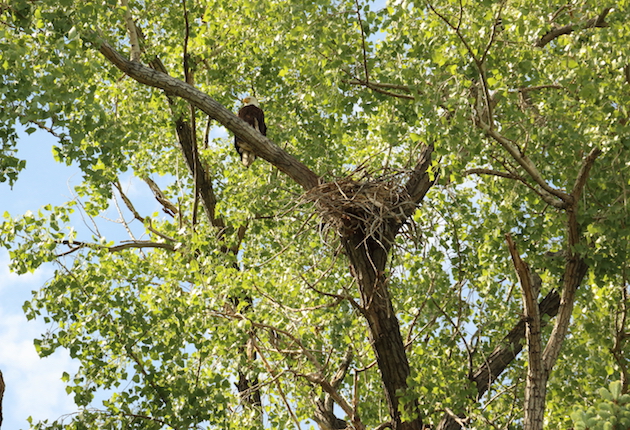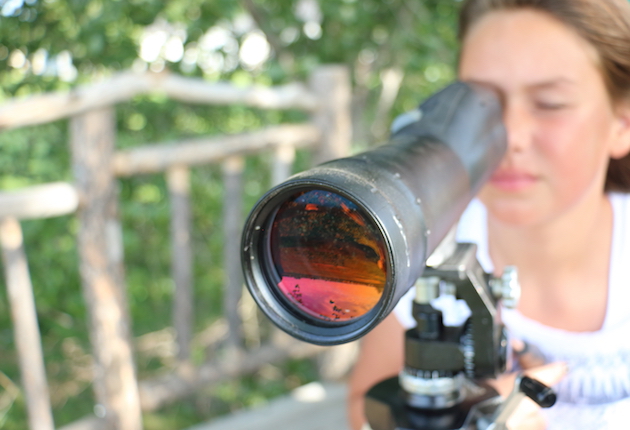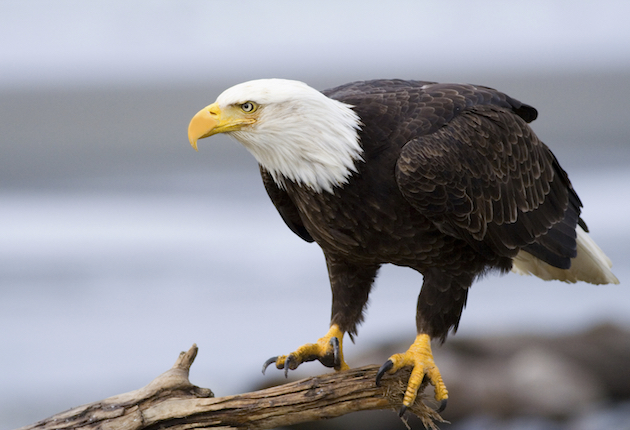The first outdoor experience I can remember actually happened inside. A man in tan and green clothes came to my school with a bird on his arm. He said, “Take a good look at this bird. It’s the last time you’ll see it.”
With my shy brown eyes, I had a good look at the bald eagle with bold yellow eyes. How was a quiet little girl like me going to make it in this world if this beautiful beast couldn’t?
Twenty years later, I saw a bald eagle in the wild for the first time. The only thing that disappeared in those two decades was my shy side. Now, my boys watch an eagle nest near our neighborhood every day and I’m an outdoor journalist covering stories about the bird that didn’t disappear.
“The fact that it’s our national symbol wasn’t an accident,” says Michael Whitfield, Greater Yellowstone Ecosystem Project principal researcher for Idaho. “Bald eagles are symbols of the wildness of this place. I think we need to do all we can to sustain this resource.”
Sustaining this resource took major change. Pesticides and poaching were the primary culprits in the reduction of birds from an estimated 100,000 nests nationwide in the late 1700s to 400 in the mid-1900s.

Bald eagles mate for life and use the same nest for years, adding to it every year. Nests can reach up to 10 feet across and weigh half a ton. This eagle in Idaho is rebuilding a nest destroyed by a storm. (courtesy: Kris Millgate/tightlinemedia.com)
In 1966, bald eagles landed protection under the Endangered Species Preservation Act, which was later transferred to the Endangered Species Act in 1978. The listing paved the way for recovery research, and Whitfield started banding birds. The pesticide DDT was also banned. We gave the bird room to spread its wings, and it did.
In Idaho, where Whitfield still works today, the South Fork of the Snake River is a bald eagle stronghold for the Greater Yellowstone Area. Pairs dwindled to barely a dozen in the ’80s. Now there are more than 80 nesting pairs.
On the Mississippi River, trappers tell me recovery success is so high that now they need less bald eagles and more muskrats. Sounds like birds a plenty, but the threat isn’t totally removed.

As the bald eagle population expands, the birds become more visible and more vulnerable. Watch from afar and never try to climb into a nest. (courtesy: Kris Millgate/tightlinemedia.com)
At the National Eagle and Wildlife Repository in Colorado, piles of illegally poached bald eagle parts are preserved and respectfully allotted to Native American tribes. On the black market, a bald eagle carcass can sell for $1,000. Bald eagles are still dying of unnatural causes. That’s the reality.
“Sometimes I can remove myself from looking at all that, but when I give a tour and we talk about specific pieces, it’s devastating,” says Coleen Schaefer, National Eagle and Wildlife Property Repository supervisory wildlife property specialist. “Wildlife has been reduced, in some cases, to something that is completely whimsical.”
Illegal activity aside, bald eagles still flourished and left the list of threatened and endangered species in 2007 with more than 9,700 nesting pairs in the lower 48.
Here are four more facts to remember when you let freedom fly on the 4th of July.
- Bald eagles garnered endangered status in some states and threatened status in others, but birds in Alaska and Hawaii were never listed. The abundant population in Alaska didn’t reach risky levels, and bald eagles don’t flock to Hawaii like tourists do.
- The extinction of bald eagles in Channel Islands National Park in the 1950s resulted in a reintroduction in 2002 and 2006. Sixty-one eaglets were released. Now the island’s white-headed sea bird is famous via live nest cam.
- Bald eagles mate for life and use the same nest for years, raising one to three eaglets annually. In 2015 an Idaho nest collapsed in a summer storm, killing two eaglets just weeks away from flying. The adults rebuilt in the same cottonwood tree and have two new eaglets this year.
- Immature bald eagles are large and dark. They won’t have a white head until they are four or five. They are often mistaken for golden eagles. Look for featherless legs. Bald eagles don’t have feathers above their talons; golden eagles do. And remember to look from afar. Very afar. Avoid nests. Including nests in national parks.
Kris Millgate is an outdoor journalist based in Idaho Falls, Idaho. See more of her work at www.tightlinemedia.com.


I wonder how many are chopped up by the windmills our Greenies and our tax dollars support?